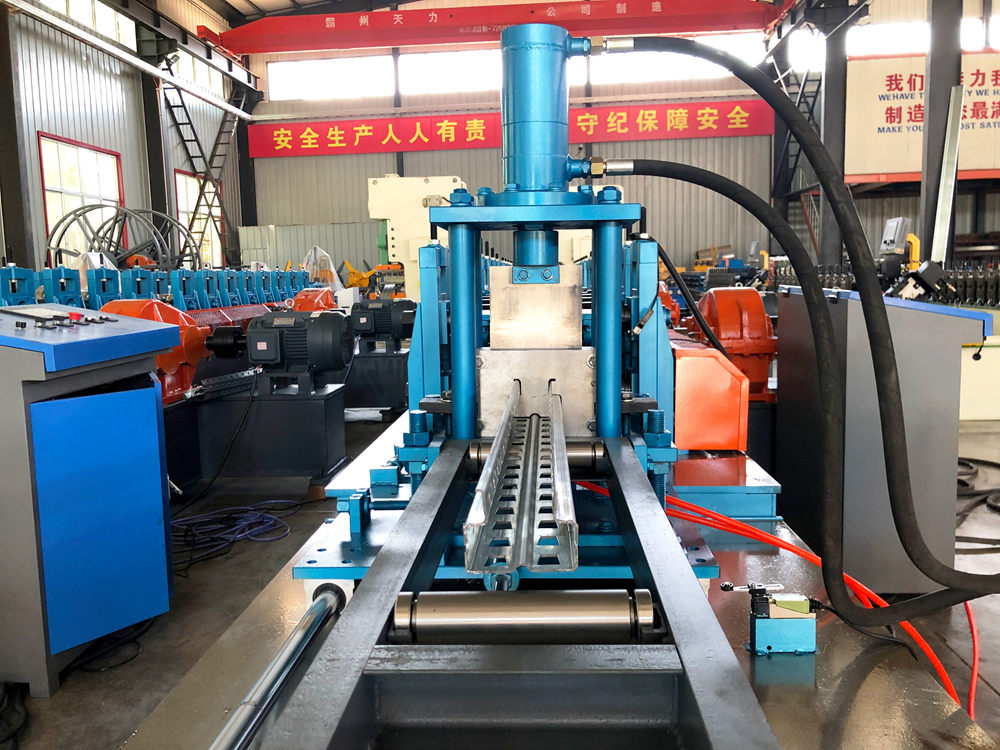
Double Layer Roll Forming Machines in China An Overview
The construction and manufacturing industries in China have seen a significant transformation with the introduction of innovative machinery. One such advancement is the double layer roll forming machine, which has rapidly gained popularity due to its efficiency and versatility. This article explores the features, benefits, and applications of double layer roll forming machines, highlighting their importance in modern manufacturing processes.
What is a Double Layer Roll Forming Machine?
A double layer roll forming machine is a specialized piece of equipment that allows manufacturers to create two different profiles of metal sheets in a single pass. This is achieved by stacking two sets of rollers that form different profiles on the same machine frame. The machine is designed to produce high-quality metal sheets for various applications such as roofing, wall cladding, and flooring.
Features of Double Layer Roll Forming Machines
1. Space Efficiency One of the most significant advantages of double layer roll forming machines is their space-saving design. By allowing the production of two profiles without the need for additional machines, manufacturers can optimize their production floor layout and reduce the operational footprint.
2. Flexibility in Production These machines are designed to accommodate various profiles and materials, enabling manufacturers to switch between different products quickly. This flexibility enhances productivity and allows manufacturers to respond swiftly to market demands.
3. Superior Quality and Precision Double layer roll forming machines are equipped with advanced technology that ensures precise dimensions and a high-quality finish. The rollers are designed to produce consistent profiles, minimizing wastage and ensuring that the end products meet industry standards.
4. High Production Efficiency The ability to produce two profiles simultaneously leads to increased output rates. This is particularly advantageous in projects requiring large quantities of materials, as it significantly reduces production time.
5. Customization Options Many manufacturers offer customization options for double layer roll forming machines. This includes modifications to the roller design, machine size, and control systems to better meet the specific needs of different industries.

Benefits of Using Double Layer Roll Forming Machines
1. Cost-Effectiveness The dual production capability of these machines reduces capital investment, as companies do not need to purchase multiple machines for different profiles. Additionally, the efficiency in production leads to lower operational costs.
2. Sustainability With the ability to produce two layers of material at once, manufacturers can minimize waste and enhance resource efficiency. This contributes to more sustainable manufacturing practices.
3. Enhanced Market Competitiveness Companies utilizing double layer roll forming technology can offer a wider range of products, cater to diverse customer needs, and respond quickly to prevailing market trends. This adaptability helps maintain a competitive edge in the market.
Applications of Double Layer Roll Forming Machines
Double layer roll forming machines are utilized in various industries, particularly in construction and manufacturing. Some common applications include
- Roofing Materials Manufacturers can produce different types of roofing sheets (such as corrugated and tile profiles) simultaneously, catering to residential and commercial construction needs. - Wall Panels The machines are used to fabricate wall panels that enhance both aesthetic and thermal performance for buildings. - Flooring Solutions With the capability to produce robust flooring materials, these machines are essential for various flooring applications in industrial and commercial settings. - Automotive and Appliance Manufacturing The versatility of double layer roll forming machines extends into the automotive and appliance sectors, where multiple metal components are needed for manufacturing process efficiency.
Conclusion
In summary, double layer roll forming machines are instrumental in transforming the landscape of metal processing in China. Their space-saving design, flexibility, and production efficiency not only benefit manufacturers but also cater to the growing demands of various industries. As technology continues to evolve, the significance of these machines is likely to rise, solidifying their place as a cornerstone of modern manufacturing practices. The investment in double layer roll forming technology represents a forward-thinking approach for businesses aiming to thrive in the competitive global market.